How will you make the world a better place for all? Change is not born out of wanting alone, it takes action, desire, clear motivation and above all –– a purpose! This is a story that began 2 years ago with a conversation that ended up inspiring the minds of a group of teachers across 4 continents to use their passions to make a difference.
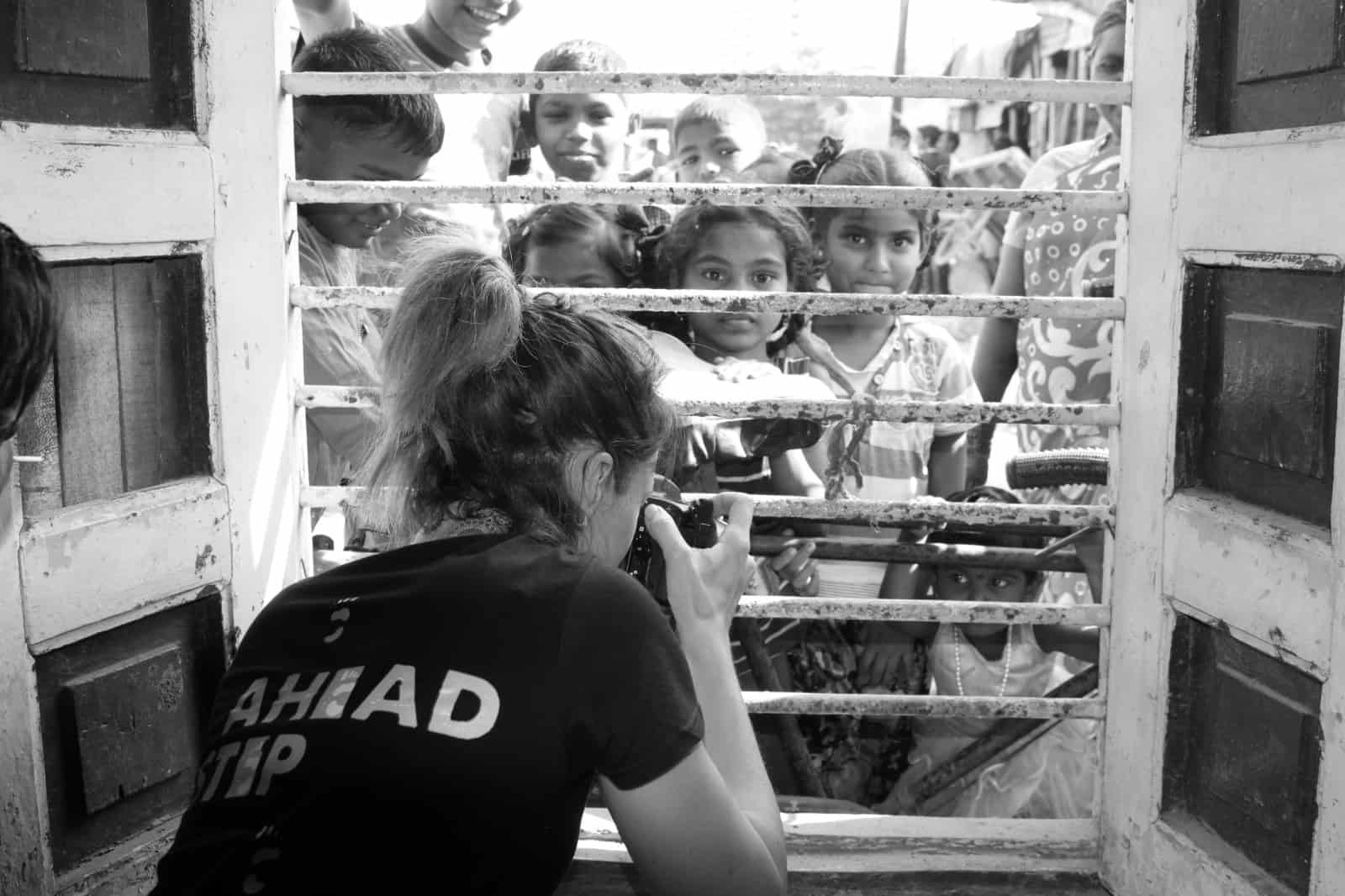
In 2017 a conversation started about running a dance outreach project in a suburb of Mumbai in conjunction with the wonderful charity Magic Bus India to promote gender equality in the community. This is how A Step Ahead and Magic Bus special project was born!
“In a society in which child marriage is still very common it is so important that we create something that empowers the girls but also involves the boys equally. Both girls and boys need to be part of a change process or the understanding isn’t engrained across society. I believe dance and the arts are uniquely positioned to promote this!” (Kimberley Martin, Founder of A Step Ahead).
On the 16th December 2018 Kimberley (Teacher & Principal of Tutus and Tiaras Singapore) and several members of her team, as well as colleagues from New York and Yorkshire (UK), traveled to Mumbai to begin the dance outreach project.
For Kimberley, there were clear overlaps between the strengths that dance experiences bring her and her pupils and the primary aims of the Magic Bus programs. The challenge was set! Spend a week in a community just outside Mumbai working on a youth project promoting gender equality through dance. Ideally ending with a community show.
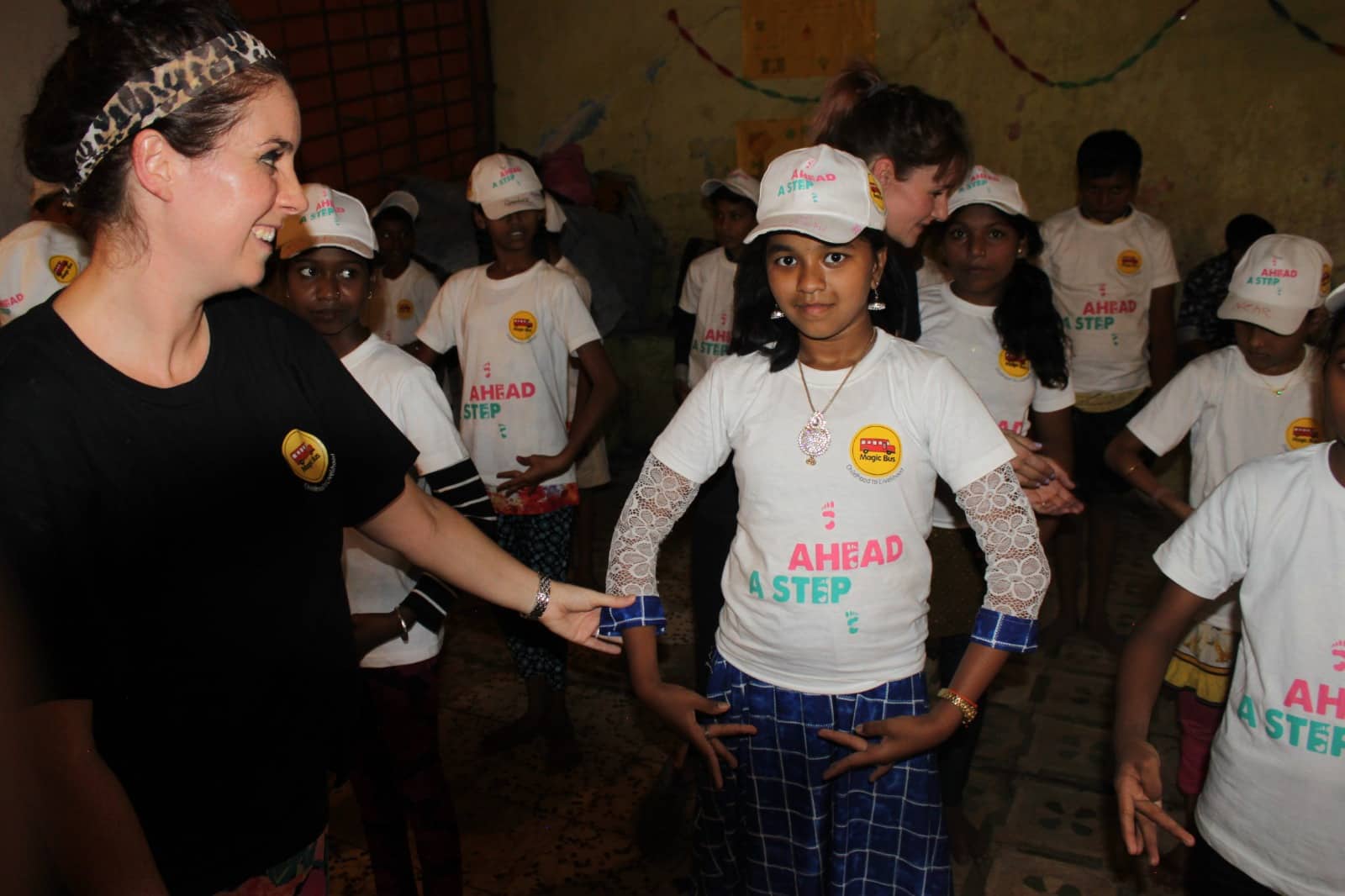
If any of you reading this have ever traveled or worked in India particularly in the charitable sector you will know some of the challenges the team had to face.
The project was based in a community in Thane, a northeastern suburb of the amazing city of Mumbai. Suspicions about the potential difficulties the team could encounter in this area were confirmed by immigration, who upon entering India questioned why anyone would want to stay in Thane.
To be honest I think that was a little unfair on Thane which is in a huge state of development but also has vast communities living in incredibly difficult circumstances and extreme poverty. I use the term extreme poverty specifically because it can be defined (by the world bank) as living on less than $1.90 per day.
This universal poverty line is interesting as different governments have their own interpretation of it. The Indian government included. When researching statistics around the number of people living in extreme poverty in India you can find statistics that vary from 5% to almost 70%. Whatever monitory definition you place on poverty in India, in a country of over 1.3 billion people it is clear they are facing an incredible battle.
India has a rising youth population with fantastic aspirations fuelled by accesses to social media and the internet. This a common scenario in the developing world. Unemployment in India could stretch into the 400 million’s in the next decade (if it’s not there already) and if you consider that at the moment nearly 80% of children don’t finish secondary school with only 1-3% of girls entering grade 12, it is easy to see why people are concerned. The Indian government is making progress, but it is tough going.
In India alone over 3.5 million NGO’s and charities operate on different scales, promoting different issues and whilst this is clearly an ineffective model, it does give you an idea of the level of ongoing support.
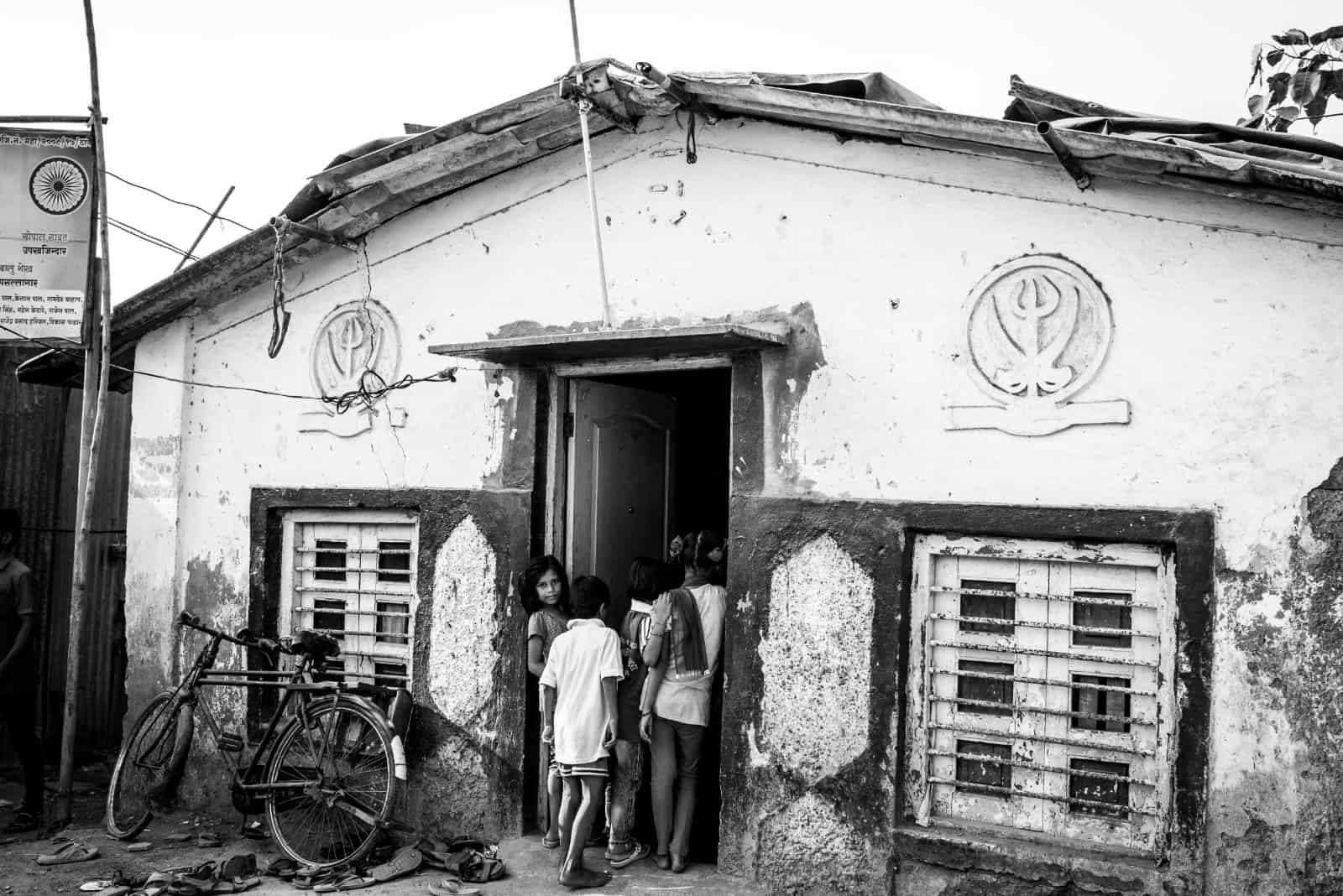
One of the biggest challenges during the project was not working with more children. Every day children would hang through windows of the small community hall to watch the dancing. It was difficult to see! The poverty in this area is inconceivable, but it is so difficult to see a way to change the circumstances of so many.
Through the power of sport and play Magic Bus take children and young people on a journey from a childhood of abject poverty and challenges such as child marriage and child labor, to a fulfilling life with a respectable livelihood. They believe that the journey from childhood to livelihood would be an answer to the widespread poverty that India experiences and every child and community should be a part of it!
The inspirational founder of Magic Bus is Matthew Spacie. He specifically argues that one of the biggest necessary changes is in the mindset and behavior of the young, they must believe they can break out of the poverty cycle and change their behavior and attitude to school.
The Magic Bus approach is premised on the principle that if children complete secondary schooling, delay their age at marriage, and are in organized work, they can break the cycle of poverty. The statistics of their work stack up too and their award-winning programs are being rolled out as much as possible across India.

All children need to move, they need to love and be loved, they need to feel the rhythm of life and believe in the future! THEIR FUTURE!! – (Sofie Martin, 9 Years old)
The project began with ballet and Hip Hop. I was interested to see how engaged the children would be with genres that not one of them had experienced, many not even witnessed, and that challenged them physically. Their response was incredible.
The girls and the boys were interested and engaged from the first move. They were resilient in the face of new and tricky challenges and so keen to learn more.
When the project was first conceived it was planned to happen in the local school, but logistical challenges meant that it was moved to into a space in the local community. This move brought with it the concern of whether or not the children would turn up each afternoon as no one was going to make them. They had to want to come back. Going into day two this was our biggest worry! We needn’t have worried! By the time we arrived the children were waiting already changed and bursting to get going!
Another major challenge was the language barrier. Linguistically this was solved by a couple of brilliant local interpreters working for Magic Bus, but to be honest, the only language being spoken by the teachers and the children was that of dance. There was a common drive to produce something that could be shared with the local community, that all would be proud of and that would highlight the children’s abilities and potential.
“Dance is the hidden language of the soul.” Martha Graham.
In this community and similar ones all across India, a high percentage of all unions are still child marriages. Over the last decade, India has witnessed one of the largest declines in child marriage rates, from nearly 50% to around 27%, although these statistics vary from source to source and state to state.
India does however still have the highest total number of child marriages by some way, largely due to its incredible population. Poor education opportunities for girls, economic poverty factors, patriarchy and pressure aimed to minimize the perceived dishonor associated with “improper female sexual conduct” often leads to girls being married around the time of puberty! When a girl marries as a child it has lifelong consequences! Her odds of finishing school and breaking the poverty cycle are dramatically reduced not to mention the associated pregnancy and health risks. It is a practice that we must continue to highlight and educate about throughout India as well as many places in the world.
On the 1st of January 2019 millions of women in southern India formed a chain that stretched over 600km protesting at what in effect was a lack of gender equality in regard to access to a temple.
Change can happen and it would seem that these issues are starting to be recognized, but there is a long way to go still! The empowerment of children is a key battle within this! This happens through education, health, and gender equality!
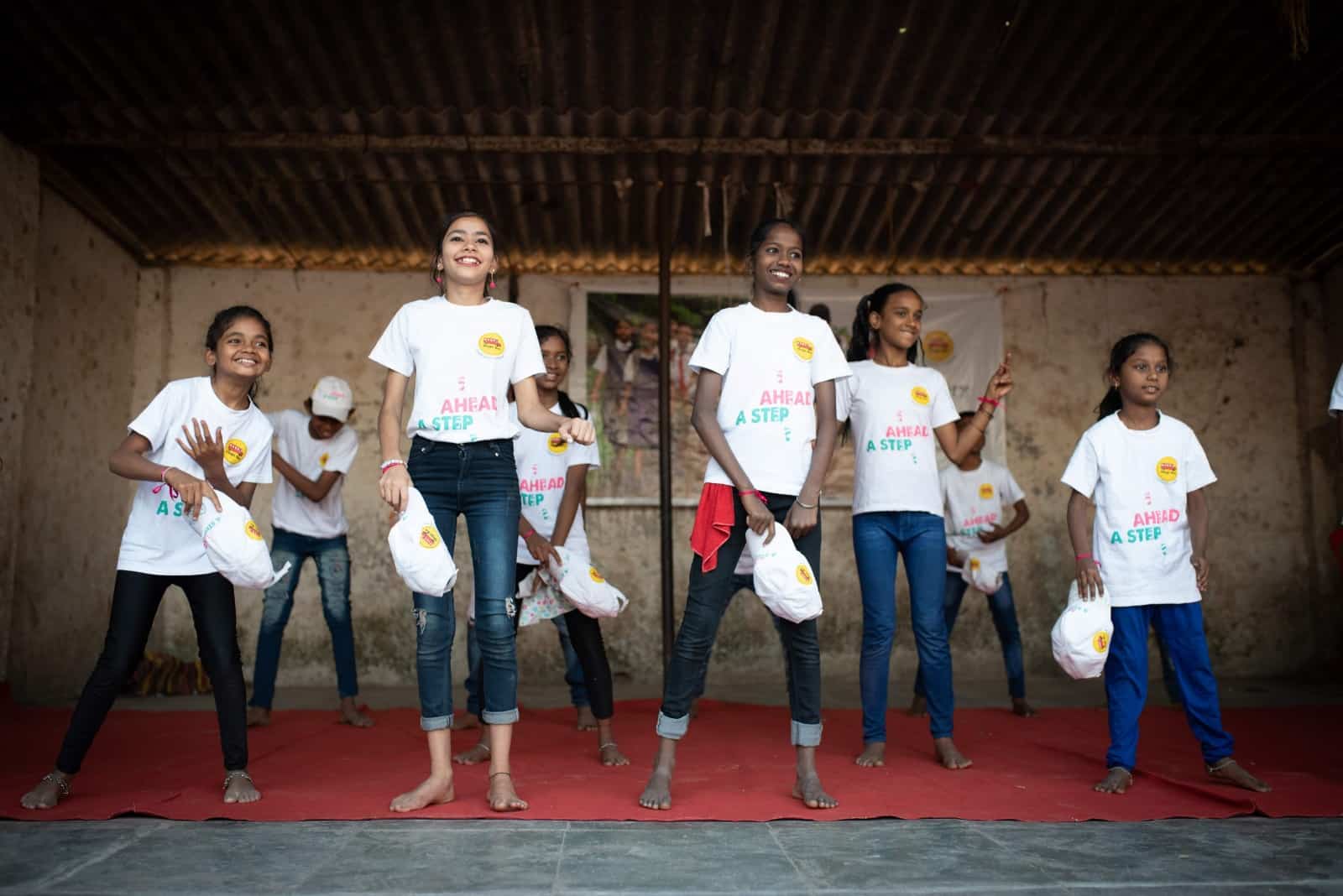
Empowering the girls and attempting to break down some of the ingrained social stereotypes was a major aim of this project. Doing this is the isolation of boys will not work.
Youth attitude change on gender equality can only happen if all genders are engaged in learning together from a young age. In this case, dance provided a wonderful medium for all to work together and learn new skills whilst pushing physical cultural barriers at the same time. It was a risk, but one that I believe really paid off! Even as a non-dance professional myself I can’t think of a better medium to promote gender equality than dance and the arts!
As the week progressed the children continued to arrive each day. Their skills rapidly improved in all genres including National and Jazz and it was amazing to see how quickly they picked up the routines.
The space we had to rehearse was small and intensely hot, but the level of engagement from the children never dropped! They were very proud of their work and indeed other aspects of their lives.
One of the overriding impressions I felt from the children (despite some awful personal circumstances) was that of resilience. We spend a lot of time as teachers discussing how best to develop resilience in our children and yet these kids have it in abundance! I can’t help feeling, however, in many of their cases the resilience is driven by survival!
“I didn’t know what to expect, but the kids were amazing! They listened, they were up for it, they engaged, and it was awesome! I’m going to keep saying awesome because it is!” (Kathie Tiffany)
The performance was to take place on Friday in the heart of the community in sort of what you would describe as a village square. A concrete platform with a corrugated iron roof was the stage and some speakers that had been wired into a live cable above (not a plugin sight) were set up to project the music.
When Friday afternoon came, however, some of our greatest concerns became a reality. We were missing several children and were being told that for varying reasons the parents of the children were not happy for them to perform in public. All of the missing children were girls. The stories behind why and what had happened in the process of them not being allowed are sadly covered in the statistics mentioned earlier and following a promise to a local youth leader I will not describe them specifically here. Still, on with the show as they say and following a quick rehearsal in the community hall, we all began the walk back through the community to the stage area.
“For children who’ve never had any dance training before, to retain the choreography and the routines was incredible and to do it with such full hearts was such a joy to witness!” (Nikki Ciotta)
What happened in the next 20 minutes will stay with me forever. As we walked we began to pick up followers and people who wanted to see what was going on both young and old. Parents and grandparents of the children, other family members, young street children, children with babies, dogs, the whole cross-section of the community. As we walked, they joined us and then filled the square with their happy and intrigued faces.
By the time we started the rehearsal on the stage we were suddenly only missing 2 children from the group that had started on day 1. Subsequently, we learned that one child was smuggled out by her Auntie to participate such was her desire to perform and finish the week! Her personal desire to complete the project despite her circumstances will forever remain an inspiration for me. She did not want to let her dance partner down or the group as a whole and performed with absolute joy! There are so many lessons in this for us all, its difficult to know where to start!
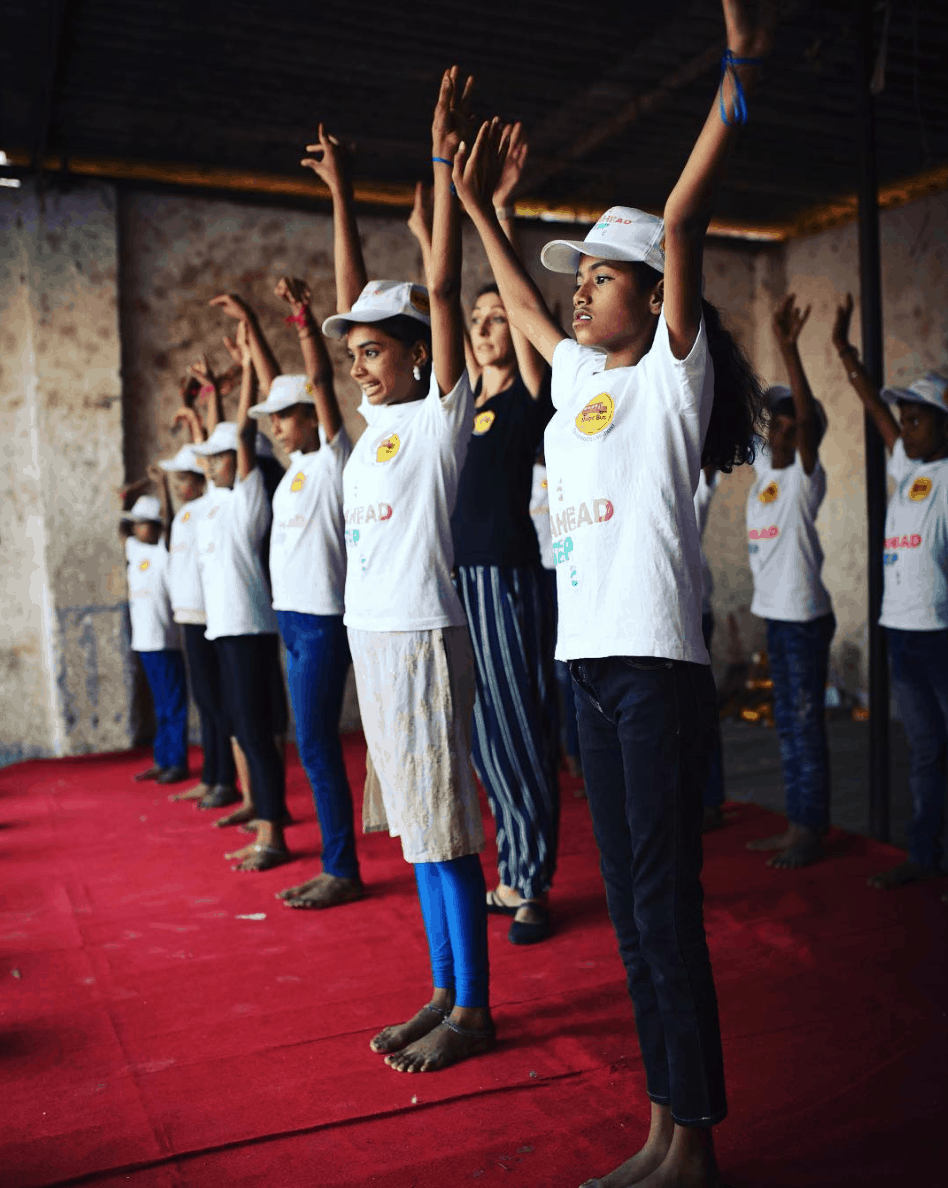
This project reached further into the children’s lives and the community than we initially thought possible and proved beyond doubt the place that Dance and the Arts has (or should have) in all Education, all over the world as well as a for a vehicle of change.
The project and the show were such a success that discussions are in place to follow several possible routes to enable the project to become locally sustainable and ongoing. It will also be registered as an official charity.
Engaging the community as a whole was a key aspect of it and this was where the performance really came into its own. In order to tackle gender equality and generationally, culturally or economically ingrained stereotyping or bias you must engage the youth population who in turn will engage their community. Dance and the arts are a fabulous vehicle for this and the vision for the future of the project is big! Please watch this space!
“Dancing and working with these children has brought me a new belief in people and humanity! My passion is so important to me and to be able to share it and for it make even the smallest of difference to these incredible children’s lives is such a privilege! It’s us, it is me that has learned the most this week”! (Kimberley Martin, Founder of A Step Ahead)
A Step Ahead with Magic Bus from Kimberley on Vimeo.
This project would not have been possible were it not for the amazing commitment and talent of the team of people mentioned below. You are all truly inspirational and should be recognized as having started something that literally has the potential to change lives! As predominantly an observer through this week, the relationships you forged with these children were incredible! It was a privilege to watch!
- Kimberley Martin – Principal Tutus and Tiaras Singapore – www.tutusandtiarasdance.com
- Nikki Ciotta – Baby Ballet Long Island – www.babyballetlongisland.com
- Kathie Tiffany – www.tiffanyphotography.co.uk
- Clare Tay – Freelance Dance specialist Singapore
- Jane Noel – Tutus and Tiaras Singapore
- Sofie and Charlie Martin – Simply the best children one could ask for (most of the time)!

